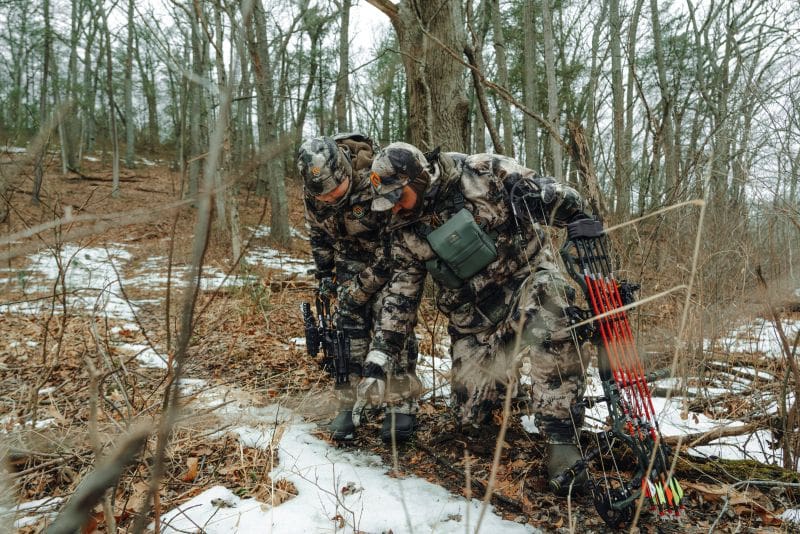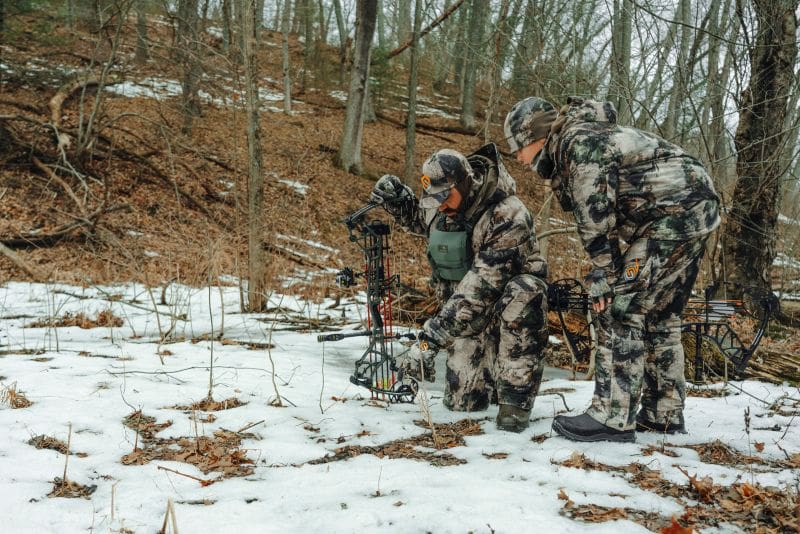For many deer hunters, November isn’t just another chance to hunt. It’s a time for tradition, and the chance to make memories they will cherish forever. It is also when whitetail bucks really start moving, cold mornings carry the sound of a distant grunt, and a quiet sit in the woods can turn into a heart pounding moment before they even realize what’s happening.
For a lot of us, November is the Super Bowl of deer season. But when you’re introducing a child to the outdoors, it becomes more than that; it becomes a chance to share the magic and pass it on to the next generation.
Over the past few years, since my own son is still too young to hunt, I’ve been taking a couple of family friends’ children out instead, the same family who owns the land I’ve hunted on for the last nine seasons. Any time I take a child hunting, I hope they catch some of the excitement and obsession I have for it, enough that it sticks with them as they grow up. This summer, the young man I’ve taken the last few years really surprised me by diving headfirst into saddle hunting, bow hunting, and deer hunting in general. I can’t take credit for his growing passion, but I’m grateful for it, and I want to do everything I can to help him enjoy the journey.
The night before Missouri’s firearms opening day, this young man decided to move one of his extra blinds so he’d be ready for the morning hunt. When I pulled up to the farm gate at first light, his farm vehicle was already there, and he was already set up in his blind. After I settled into mine, I texted him, “I’m in my blind. I thought I was early, but you’re really early.”
A little later, I learned the truth: he hadn’t just beaten me to the woods, he had slept in his blind all night. At fourteen years old, he’d even convinced his parents to let him do it. Seeing that level of excitement and dedication brings me right back to how I felt at his age. And to top it off, that afternoon we both ended up tagging bucks on their farm, adding another great memory to our story.

A Season Built for Teaching
No other month highlights deer behavior like November. Bucks move around more, a fresh sign appears overnight, and deer are active during the day. This burst of activity offers natural learning opportunities.
When I was a kid, my father would show me the difference between a fresh rub and a month old rub. We would also compare tracks in the mud and find new scrapes that had appeared on the edge of a food plot or an old logging road. These small lessons are some of my fondest childhood memories of learning to hunt. They are also excellent ways for others to teach newcomers how to hunt, scout, and connect the dots in a way no classroom or YouTube video ever could.
When a child begins to understand why deer behave the way they do, why bucks cruise ridgelines, hit funnels, or check doe bedding areas, they aren’t just learning to hunt. They’re learning to appreciate the entire whitetail world. Soon after, they will start taking an interest in getting new hunting gear, such as a grunt call, binoculars, new camo, and so on. This, too, shows they are passionate about hunting and not simply going because their parents, family, or friends want them to go.
Slowing Down and Savoring the Small Things
Youth rarely forget the first buck they see or the first cold morning in a treestand, but what they remember most are the small things: the crunch of frosted leaves, the steam from their breath, the soft hoot of an owl before daylight, and simply being on a deer hunt.
One of my life testimonies involves hunting with a younger child. While on a special needs hunt with a boy who had cancer and had lost much of his eyesight, we missed a mature buck and were looking for blood. This hunt was made possible through the NWTF Disabled Youth Hunt program, which provided a device that allowed the shooter to hold and fire the gun using two remote controls. After thirty minutes of hunting, a mature buck quickly approached, and we tried to line up the shot with the device. However, we missed. As we looked for blood, I felt mad at myself, disgusted, and upset. Filled with this anger, the boy said to me, “I am glad we missed that deer.” I looked at him and asked, “Why is that?” “I’m not ready to stop hunting with you; I want to hunt longer,” the boy replied. My heart broke, and I quickly realized I needed to enjoy the hunt itself rather than worry about killing a deer. From that day on, I’ve made it a point to embrace the moment, pass it on to new generations, and not worry about whether I kill a big buck or not.
November hunts with children often move at a slower pace, and that’s a good thing. Instead of focusing solely on filling a tag, it becomes a chance to slow down and soak it in together. Bring snacks, bring stories, and bring patience. The laughs and whispered conversations often lead to more years spent in the woods rather than antler inches, and that is okay.
Creating Traditions They Will Carry Forward
Whether it’s the hot chocolate at the truck before daylight, taking selfies in the blind, or the fun walk into your favorite oak ridge in the dark, November is made for tradition. When you share those rituals with a young hunter, you’re giving them something to look forward to long before they can even shoulder a rifle or pull a bow.
Consider making a few new traditions just for them:
• Let them pick the snack for the hunt.
• Let them handle a grunt call and learn its sounds.
• Give them a small job such as scouting with binoculars, carrying a cushion, or reading tracks.
These small responsibilities go a long way in helping them feel like a part of the hunt.
Building Confidence, One Experience at a Time
The rut can be unpredictable, and for youth hunters, that’s part of the fun. They get to experience moments of excitement and quiet stretches of patience.
If a buck doesn’t show up, that’s okay. If a doe busts you because someone moved too much, that’s part of the learning curve. Use each moment, successful or not, as a confidence builder.
When the opportunity finally comes, let them feel the celebration. Take photos, high-five in the stand, and talk through the emotions. These are the memories that cement their love for the sport.
Preserving the Future of Hunting
Every experienced hunter understands the importance of the future of hunting. As times change, seasons shift, and old hunting grounds disappear, the one thing that keeps the tradition alive is the next generation. By sharing November with youth, we give them more than just a hunting experience. We provide an understanding of wildlife, conservation, self reliance, and respect for the outdoors; values that endure far beyond deer season.

A Month Worth Passing On
November holds a special kind of magic. This magic is one that every hunter should experience at least once. When you’re hunting with a child through cold mornings, rutting bucks, and timeless November traditions, you’re passing down a gift that influences who they become, both in the woods and in their life.
One day, years from now, you will find yourself like me, sitting in a tree stand with family, friends, or your own child or grandchild, teaching the same lessons and loving the same November magic that you experienced as a kid.

